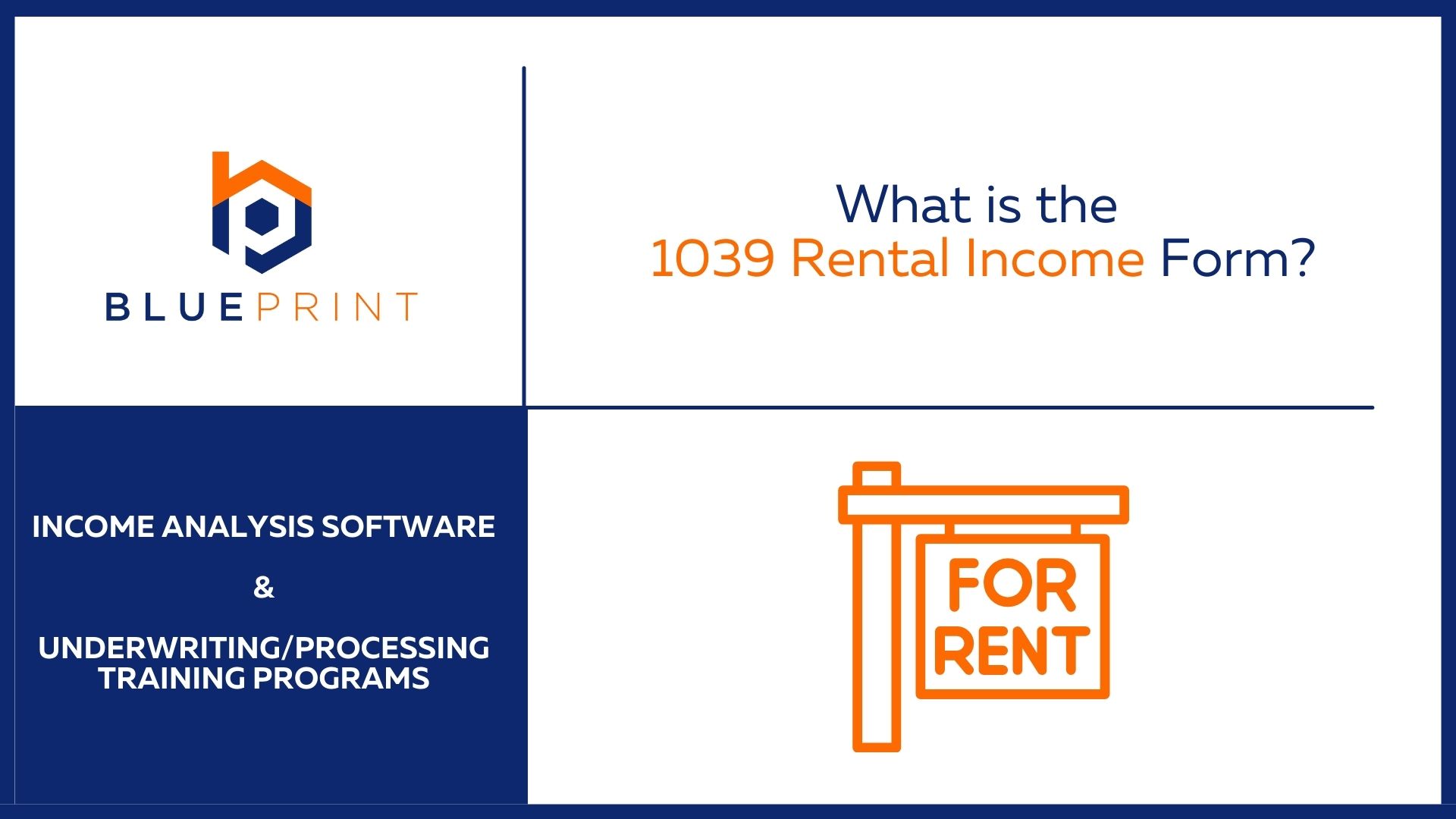Over the years I have seen many borrower applications with rental real estate as part of a borrower’s financial picture. Personally, I think the increase in rentals is partially due to people watching “fix it and flip it” shows. But what happens when you get a borrower who owns rental properties that are personally financed and provides a business return with an attached IRS Tax Form 1065/1120S which includes a https://www.irs.gov/forms-pubs/about-form-8825 ?
To understand the steps needed to handle a borrower like this, let’s go over some ground rules that will show you what the correct process is.
- This information only applies if you are selling a loan to Fannie Mae.
- The borrower’s credit report shows that there is a mortgage associated with a property owned by the 1065/1120S business on the schedule 8825.
- Your borrower does not qualify with the full mortgage payment (PITIA) of the property owned by the business.
What is the 1039 Rental Form?
The 1039 form is called a Business Rental Income from Investment Property(s) Rental Calculation Form. The reason for this unique calculator is Fannie Mae takes a different approach than all other agencies. Their view is when the borrower took the mortgage loan out, it is the borrower that is ultimately responsible for the payment, NOT the business or any other person who is part of the business who owns the rental.
The short answer to what is different about the calculations is once you complete the 1039 from the data found on the 8825 (and confirmation of the FULL PITI of the property) income form, if the net result is an income, the underwriter can wash the payment from the borrower’s debt load, but NO income can be used in any circumstance. If the net result is a loss, the borrower must qualify with the full amount of the rental loss. The business owners’ debt-to-income ratio includes the rental loss, irrespective of their percentage of ownership in the business.
What is the 8825 form?
An 8825 form is officially called a Rental Real Estate Income and Expenses of a Partnership or an S Corp. In plain English, it is the company version of the Schedule E rental real estate form we often see. It performs the same function but applies to company-owned real estate with a few differences. You will need this form to complete the data in the 1039 form. It will be attached to the 1065/1120S that owns the properties.
Summary
In conclusion, owning rental properties can be a profitable venture. But it’s crucial to understand the rules and regulations surrounding it. If you do NOT need to use a Fannie Mae loan program for a borrower with personally financed rentals…skip it!
If you need more information on the 1037/1038/1038A rental forms, check out this blog on Rental Forms You need to Know. There we discuss other rental income forms where they apply and when to use which form.
For more information about this and other incomes, check out the Blueprint blog. We are the IncomeXperts and build software tools to help you master getting the borrower income right every time!


4 Responses
I love that you guys do this. It would be great if you could also provide a “paid” platform where subscribers could pay a monthly fee to have access to video explanations that provide example documents and example calculations that we could watch and learn from. Just a thought, thank you for the educational info you provide.
Hi Josh
We do offer a paid training service on many UW topics! Email us at info@getblueprint.io for more info!
Mike,
Thanks so much for this. One question—can you still exclude the mortgage payment if you can verify that the payment has been made by the business over the last 12 months.
Hi Michael
In general yes you can deduct the payment if you have evidence of pyament from a business account for 12 months , and looking at the business return you can track down the line that has the expense listed on it. Example if you have a car payment , you may not be able to deduct the pricinpal but you would have interest payments that confirm some type of loan is being paid. That second part is what gets UW in trouble, they see 12 payments from a checking account… but don’t find the matching deducation on the business return.